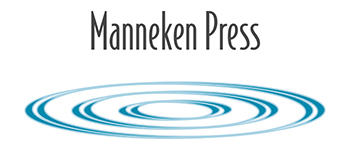O ur second project with Matt Magee was released in March 2024. The structures of Winter Pool and Mind Gap were inspired by a small painting by Paul Klee titled “Mask”, from 1924. In Klee’s painting a central oval form resting on a neck/base sprouts red-orange hair and is striated with orange and yellow lines which form the contours of a face. In Magee’s prints the frontality and flatness of the oval shapes relate to the head-like form in the Klee painting. The central ovals are filled with a matrix of rectangles which activate the inner peripheries of the forms. The white of un-inked paper is an important aspect of these aquatints; this negative space forms the blocks in Winter Pool, while Mind Gap’s blocks are positive, floating within the negative space. Magee transmutes Klee’s head shape into thought bubbles with udders – innately linguistic, though in an indecipherable language.
Lunar Lantern has its origins in an ink drawing from 2017. The image references a trilobite, the marine arthropod commonly found as a fossil. Stacked slices create a structure that appears to be lit from within. As with Winter Pool and Mind Gap, the white of the un-inked white paper plays an important role, creating the moon slices as negative space surrounded by the purple pigment. The print’s stacked and centered ancient forms create an object of ritual that holds space and light as it rises.
The prints are aquatints on Rives BFK paper printed in editions of 20.
Manneken Press’ first project with Arizona-based artist Matt Magee was released in June 2021. Hard-edged and drawn from art historical precedents, Magee conceived Plugs, Bugs and Drugs as an abstract poetic triptych that riffs on conceptual notions of language and iterative processes relating to stacking and sequencing. Using templates and measuring tools Magee drew the images directly onto copper plates, leaving space at the margins so formal information became centralized, focused and symbolic. The forms and their titles are suggestive but non-explicative. Magee’s prints are aquatints, hand-printed in colors on Somerset Velvet Soft White paper in editions of 20.
About Matt Magee
Matt Magee is an American contemporary artist who is best known for his minimal abstract geometric paintings, sculptures, prints, assemblages, murals and photographs. He was born in Paris, France in 1961 and moved from there to Tripoli, Libya and then to London. In 1984 Magee moved to Brooklyn where he maintained a studio until 2012. Magee currently lives and works in Phoenix.
Over a career spanning more than four decades, Matt Magee has experimented widely with abstract and conceptual art practices. Drawing inspiration from the 1960s minimalist movement, Magee combines his fascination with language and his command of design sensibilities in carefully arranged compositions and sculptural installations. Magee’s compositions are organizations of shapes that have been informed by personal history, numerology, and language. Within these conceptual spreadsheets, abacuses and hieroglyphics are reminders of the artist’s hand. His visual language relates to early hard-edge abstraction and finds inspiration in contemporary scientific, ecological and technological ideas.
Magee has an MFA from Pratt Institute and a BA in Art History from Trinity University. Magee was awarded two resident fellowships (2007 and 2015) at the Josef and Anni Albers Foundation, and was recipient of a New York State Foundation for the Arts Grant in 2002 and of a Pollock-Krasner Foundation Grant in 1991. His work has been exhibited worldwide including at the Tamarind Institute, Albuquerque; Museum of Fine Arts, Houston; Phoenix Art Museum; Museum of Contemporary Art, Scottsdale; Dallas Center for Contemporary Art; Contemporary Museum, Baltimore; and the Albright Knox Gallery, Buffalo, among many others. Matt Magee is the subject of a monograph published by Radius Books in 2018.
